Greetings!
If you are new here - or even if you are not - welcome! If you are used to Tails & Twists, I hope you are enjoying Captivating Creatures just as much or more. Between my daughter and me, we’ve had a pretty successful look into nature and wildlife lately. Both of us managed to catch and release some stinkbugs that somehow found their way inside the house, admire several mushroom species, enjoyed many backyard birds including chickadees, thrushes, and Stellars Jays, and she even went to an elk preserve and watched the herd for a while. I’ve done the same myself and totally recommend it if you have the opportunity.
This Week
You know those weeks when you feel like you’ve been really busy but can’t seem to figure out what you’ve been doing? That’s what my week has been like. I think it is because my wife and I have been involved in a variety of little things and a couple of big ones. They all start blurring together. :)
One of the most memorable events is when my 20-year-old son fractured a bone in his foot by missing a stair and landing on the side of his foot with all of his weight. Ouch! That was Monday and by Wednesday he was feeling quite a bit better inside a support boot and with the swelling going down.
I know we are a couple of years behind the trend, but my wife and I have gotten addicted to the Nintendo Switches we got for Christmas. I am deep into Animal Crossing and Lego Harry Potter and my wife is obsessed with Lego Star Wars. I’ve never been a big gamer so the fact that I am really into the Switch games is fairly impressive. It’s cutting down on my TV time in the evenings and helping with eye-hand coordination and possibly building new neural pathways for my aging brain, so it seems mostly positive.
As for an update on our cats, Max and Jasper, Max went into full bully mode for a couple of days and Jasper didn’t eat very much during that time. The slowed eating on Jasper’s part may have also been caused by stress. We had to catch and clean Max because he smelled like pee. It happens sometimes with long-haired cats. When Jasper saw what was happening he ran and hid, and we barely saw him for the rest of the day, and even into the next. There was no way he was going to be cleaned in such an undignified manner!
We are experimenting with a variety of things to calm Max’s bullying down. Feliway doesn’t seem to help much. Rescue Remedy helps sometimes. We are giving him lots of love and attention in case it’s about him feeling insecure. I’ve been trying to communicate that there is plenty of love, food, and toys to go around.
A couple of days ago, I saw him posting himself in a very lionesque manner in our entryway, which is midway between the front room where Jasper was hanging out and their food area. I decided to sit on the stairs a few feet from Max and watch him. It seemed to throw him off his game.
I’m working on the art of distraction, much as I used to do with my kids when they were little. Two nights ago I found myself carrying Max away from a near-altercation with Jasper, opening our bedroom window and hoping he’d jump into it and breathe in the night air. I didn’t place him in the window myself because Max does not like to be placed, thankyouverymuch. He will leave and come back rather than stay someplace he has been placed. Fortunately, putting him on the floor near the window allowed him to jump into the window himself. Distraction achieved!
Full Speed Ahead
What About…?
Ladybugs
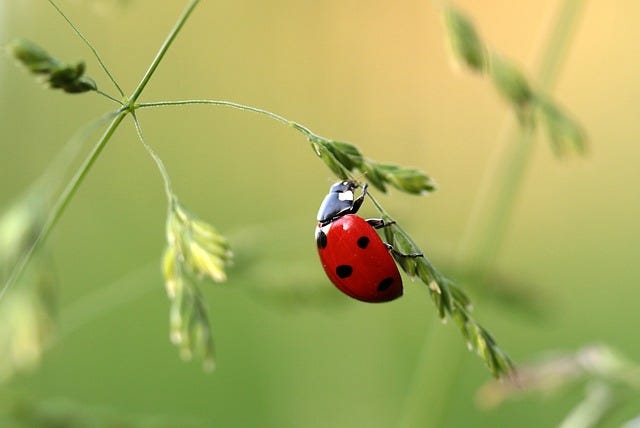
If you had to pick your favorite insect, wouldn’t ladybugs at least rank in the top five? They are pretty, harmless to humans, and are generally beneficial insects. Ladybugs are often featured in children’s books, used in children’s and garden decor, and I suspect many of us are pleased when we encounter a ladybug. I know it always puts a smile on my face.
Despite their names, ladybugs are not technically bugs, but instead beetles. True bugs have needle-like mouthparts (proboscis) with which drink their food, such as sap, nectar, and other fluids. Beetles have mandibles which are essentially jaws that are used for grasping, pinching, and cutting their food. (There are other differences, too, in case you are ever in a trivia game.)
Due to the fact that ladybugs are not really bugs, the British call them ladybirds. The obvious response is, “But they aren’t birds, either.”
Ladybugs are great friends of gardeners and farmers due to the fact that they prey on insects that eat and can severely damage plants. Aphids are their favorite food and an adult ladybug will consume approximately 5000 aphids over its 1-2 year lifespan.
Ladybug larvae are said to look like tiny, often black, spiky alligators with colorful spots or bands of color. I’ve seen them before and wondered what they were. I would never have guessed they were a stage in the life of a ladybug.
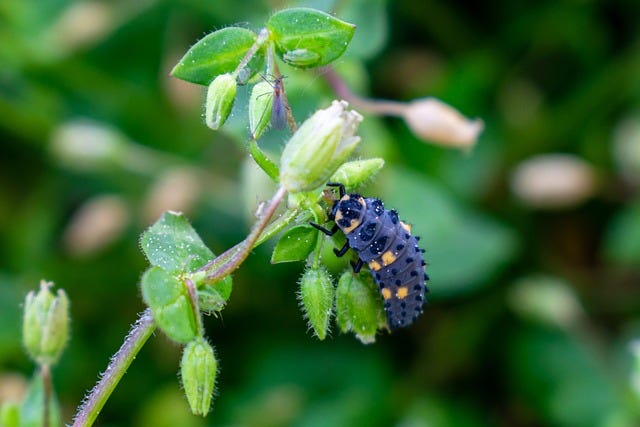
Most people think of ladybugs as being red with black spots. Many of them are, but as there are around 5000 species of ladybugs, they have many color variations. These include orange, yellow, black, tan, purple, green, pink, and even metallic blue. Some have brightly colored or black spots, and others have no spots.
The bright coloring of ladybugs is to warn off predators, who apparently understand that bright colors mean “Danger: Do Not Eat.”
Another defense ladybugs have is that they can secrete a bad-smelling, nasty-tasting liquid from their leg joints when threatened.
Ladybugs can also play dead. It seems a dead insect that looks dangerous and smells bad isn’t something many predators care to add to their diet. Animals that do eat ladybugs despite the warnings include birds, frogs, wasps, and spiders.
Exploring More
Ladybugs, Zombies and Rock & Roll
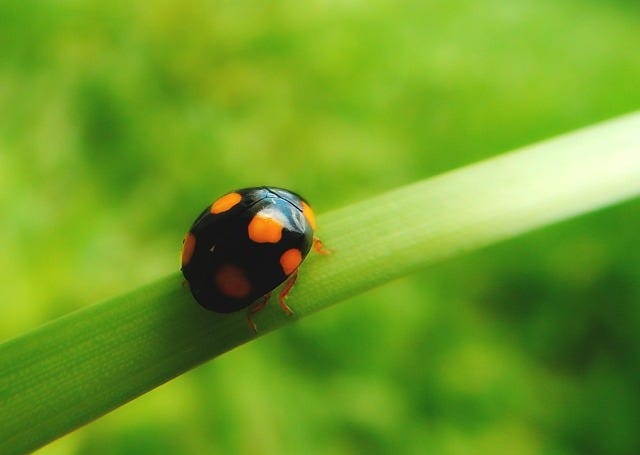
Ladybugs, or ladybirds, if you prefer have existed for at least 53 million years, according to specimens found in amber (fossilized tree resin). The name ladybird, popular in England, was first used over 600 years ago in reference to a particular type of beetle. It is said farmers were praying to the Virgin Mary (Our Lady) to save their crops that were being destroyed by pests. Soon thereafter, beetles arrived, ate the pests, and saved the crop. The farmers began calling the insect “Beetle of Our Lady,” “Lady Beetle,” or “Bird of Our Lady.” Eventually, it was shortened to ladybird in England and ladybug in North America.
Another story about the origin of the name ladybird agrees that it was named after the Virgin Mary but claims it is because paintings in the Middle Ages often portrayed her wearing red.
Whatever the origin of the name, ladybugs (I’m sticking with that name as I live in the U.S.) are beautiful, mostly beneficial insects. Farmers and gardeners love them for their voracious appetites for pests, especially aphids. Children love them because they are cute, harmless, and even star in a nursery rhyme. Although, as is true of many nursery rhymes, the words are somewhat disturbing.
Ladybird, ladybird fly away home,
Your house is on fire and your children are gone,
All except one,
And her name is Ann,
And she hid under the baking pan.
One theory suggests this was a way to encourage kids to shoo the insects off of them (fly away home) rather than killing them. This also fits nicely with the popular, cross-cultural belief that ladybugs bring good luck and killing them is bad luck.
Earlier, I mentioned that ladybugs are “mostly” beneficial. There are a few species that will munch on plant leaves, but even these tend to not be as big of a problem as the pests they eat. Probably the most harmful ladybug is the harlequin, Asian, or Halloween ladybug. These are different names for an invasive species of ladybug that is an amazing pest predator but is also a threat to native ladybug species because of a toxic parasite they carry, plus they compete for food. However, the benefits outweigh the harm, and when non-experts try to eliminate harlequin beetles they often misidentify them and harm native species.
One other unexpected harm that the harlequin ladybug can cause affects wine-makers, and potentially wine-drinkers. They can cause a fault in wine called “ladybug taint.” Ladybugs that get crushed along with grapes can cause the wine to have excessive flavors and aromas of green bell peppers, asparagus, and peanuts. All ladybugs could cause wine taint but it seems it is most often caused by the highly disease-resistant and invasive harlequin ladybugs.
Moving on to some more historical and entertaining ladybug stories, let’s start with this one. How did famous first lady, Ladybird Johnson, acquire her name? Born Claudia Alta, her nursemaid said she was “as purty as a lady bird.” Researchers disagree on whether she was referencing an actual bird or the insect, or perhaps even something else.
Next, did you know ladybugs have been to space? In 1999 one of the LEO (Launching Education into Orbit) experiments enabled high school students to send ladybugs and aphids into space on a NASA shuttle in order to study the relationship between predator and prey in a microgravity environment. Normally, ladybugs climb up a plant to search for aphids, and aphids jump down to escape them. Would ladybugs still be able to catch their prey? The answer was a resounding yes.
Sometimes it seems like zombies are everywhere, right? They are on TV shows, in movies, and I once saw a zombie wedding party celebrating in the streets of downtown Portland, Oregon. Even ladybugs are not immune to the zombie phenomenon. A specific species of wasp is able to lay an egg along with a virus inside a ladybug’s body and create a zombified ladybug babysitter for its young. A few weeks after the egg is laid, a wasp larva emerges from the ladybug and begins creating a cocoon between the ladybug’s legs. At more or less the same time, the virus paralyzes the ladybug, who then involuntarily twitches from time to time. The movement, along with the ladybug’s own warning colors protects the cocoon until the adult wasp hatches about a week later.
Many ladybugs die as a result of this hijacking of their bodies, but not all do. There is at least one case of a researcher observing a ladybug not only live but thrive well enough to lay eggs.
It’s difficult to follow that bit of trivia, but this might just do it. Ladybugs do not like rock and roll. Scientists conducted an experiment to test their “AC/DC hypothesis,” based on rock band AC/DC’s lyrics “rock and roll ain’t noise pollution.” Well, it seems ladybugs disagree. When a variety of music genres, including country, folk, and rock were played at the same volume level, aphid consumption decreased only for those ladybugs listening to rock and roll. This resulted in smaller soy plants due to the presence of more pests. Even though scientists don’t know why rock and roll impacts ladybugs’ consumption levels, the study has ramifications for other animals and how changes affect the food web.
Do ladybugs really prefer country music to rock and roll, or could it just be that they enjoy rocking out so much that they forget to eat?!
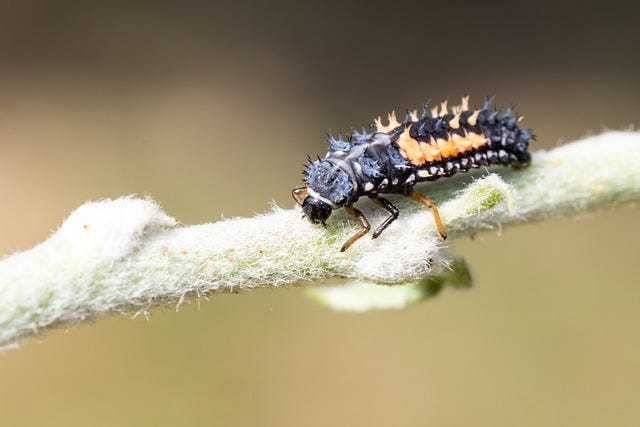
Main References:
National First Ladies’ Library
National Geographic & National Geographic Kids
University of Florida / Featured Creatures
Want to try something interesting this week? Grab your phone and take a close-up photo of an insect, bug, slug, spider, mushroom, or plant. Zoom in on the photo and see how much detail you can actually see. It can be pretty amazing.
If you enjoyed this issue, please click on the heart at the bottom. This helps more people find my work and also lets me know someone is out there reading what I’ve written.
Peace,
Dakota Duncan
You can support me by sharing this update with a friend. If you received this from someone else, go ahead and sign up for a free subscription of your very own here:
If you want to learn about my graphic novel or children's chapter books, please visit my website: dakotaduncan.com


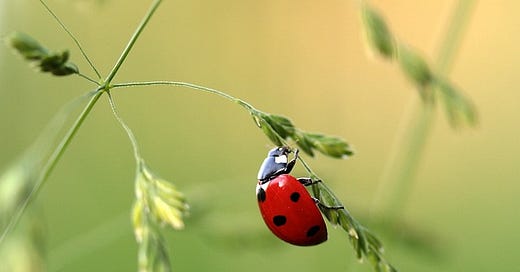


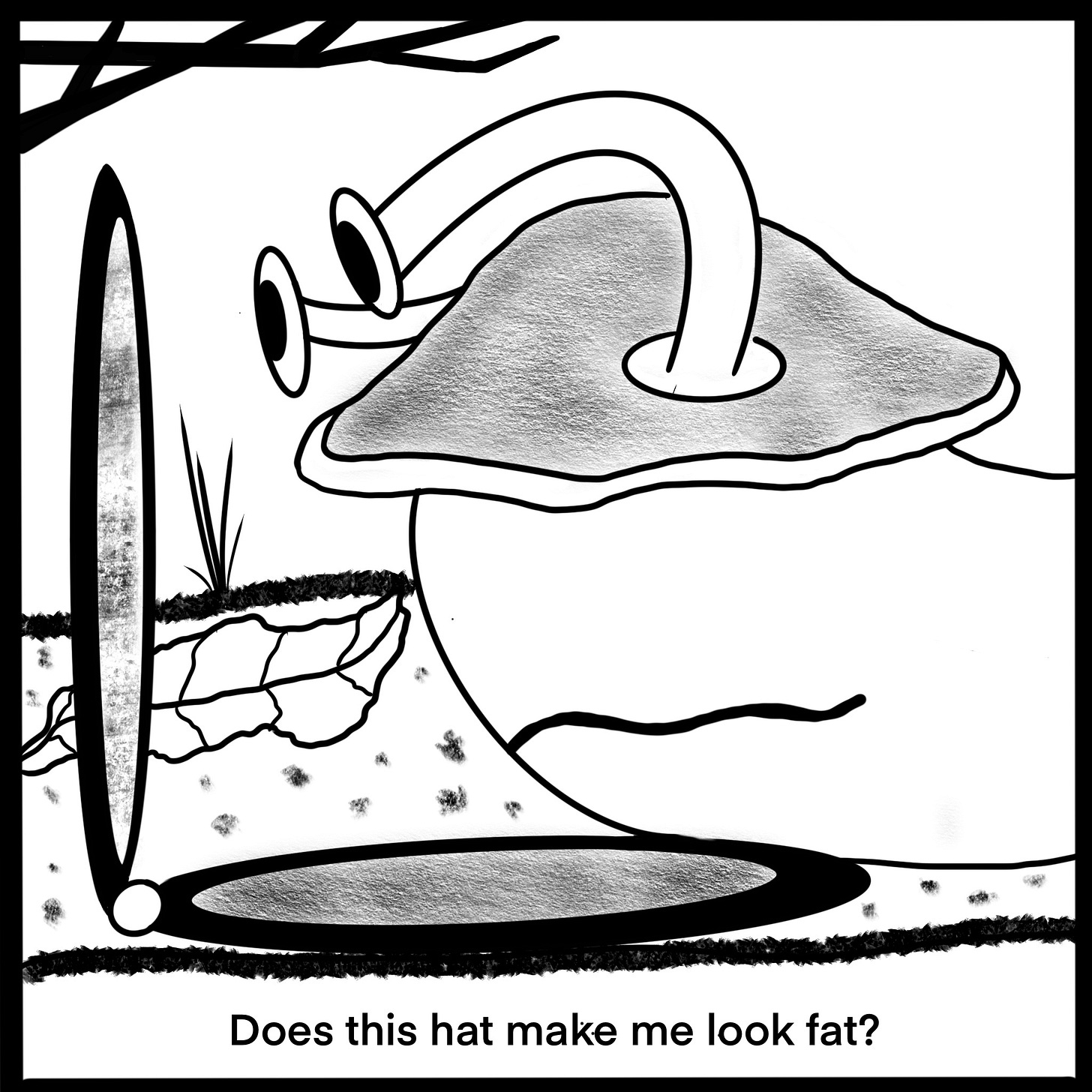

Great article. I will never get tired of your observations and analyzes of Jasper and Max :)